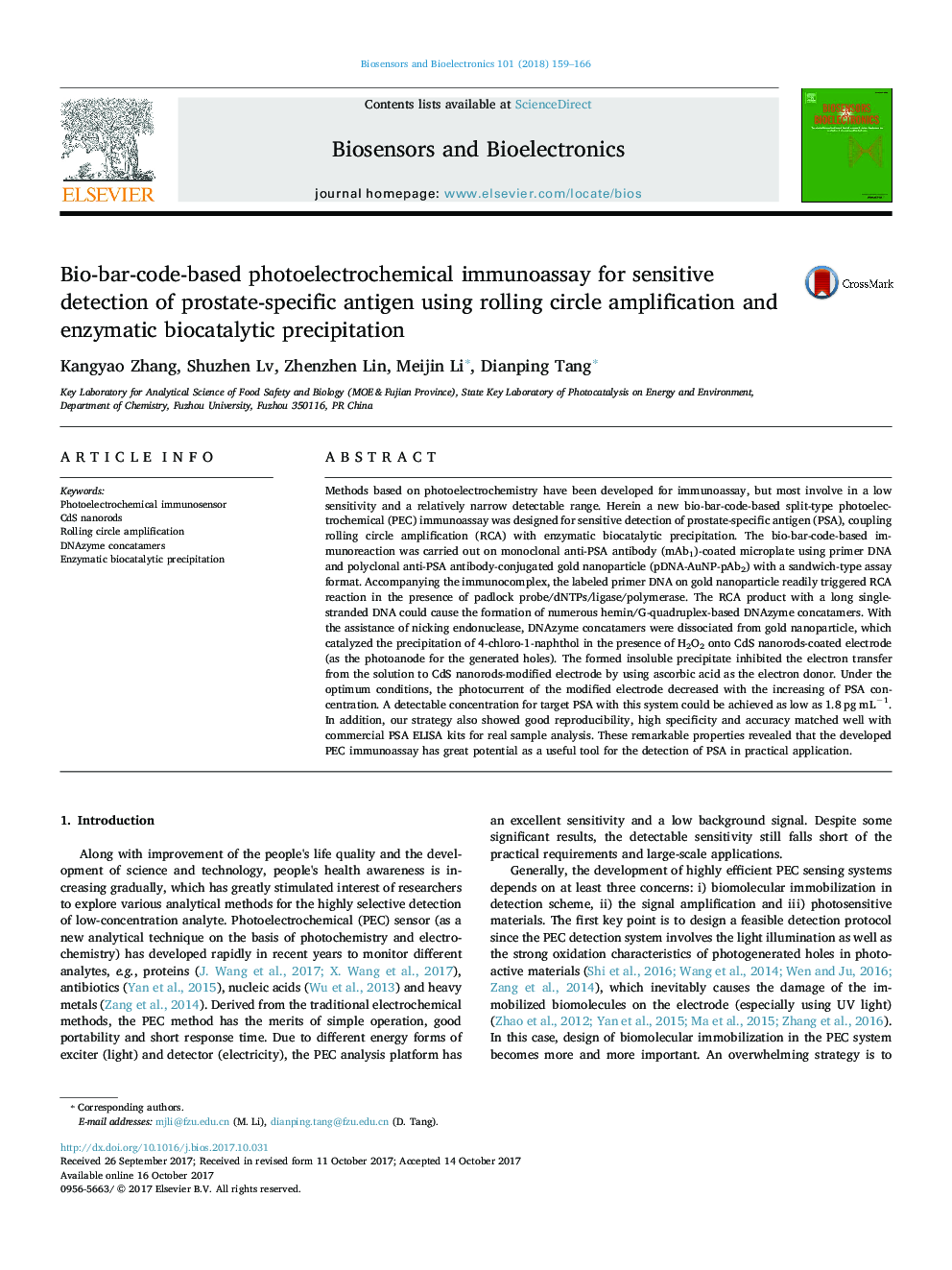| کد مقاله | کد نشریه | سال انتشار | مقاله انگلیسی | نسخه تمام متن |
|---|---|---|---|---|
| 7229888 | 1470931 | 2018 | 8 صفحه PDF | دانلود رایگان |
عنوان انگلیسی مقاله ISI
Bio-bar-code-based photoelectrochemical immunoassay for sensitive detection of prostate-specific antigen using rolling circle amplification and enzymatic biocatalytic precipitation
دانلود مقاله + سفارش ترجمه
دانلود مقاله ISI انگلیسی
رایگان برای ایرانیان
کلمات کلیدی
موضوعات مرتبط
مهندسی و علوم پایه
شیمی
شیمی آنالیزی یا شیمی تجزیه
پیش نمایش صفحه اول مقاله

چکیده انگلیسی
Methods based on photoelectrochemistry have been developed for immunoassay, but most involve in a low sensitivity and a relatively narrow detectable range. Herein a new bio-bar-code-based split-type photoelectrochemical (PEC) immunoassay was designed for sensitive detection of prostate-specific antigen (PSA), coupling rolling circle amplification (RCA) with enzymatic biocatalytic precipitation. The bio-bar-code-based immunoreaction was carried out on monoclonal anti-PSA antibody (mAb1)-coated microplate using primer DNA and polyclonal anti-PSA antibody-conjugated gold nanoparticle (pDNA-AuNP-pAb2) with a sandwich-type assay format. Accompanying the immunocomplex, the labeled primer DNA on gold nanoparticle readily triggered RCA reaction in the presence of padlock probe/dNTPs/ligase/polymerase. The RCA product with a long single-stranded DNA could cause the formation of numerous hemin/G-quadruplex-based DNAzyme concatamers. With the assistance of nicking endonuclease, DNAzyme concatamers were dissociated from gold nanoparticle, which catalyzed the precipitation of 4-chloro-1-naphthol in the presence of H2O2 onto CdS nanorods-coated electrode (as the photoanode for the generated holes). The formed insoluble precipitate inhibited the electron transfer from the solution to CdS nanorods-modified electrode by using ascorbic acid as the electron donor. Under the optimum conditions, the photocurrent of the modified electrode decreased with the increasing of PSA concentration. A detectable concentration for target PSA with this system could be achieved as low as 1.8 pg mLâ1. In addition, our strategy also showed good reproducibility, high specificity and accuracy matched well with commercial PSA ELISA kits for real sample analysis. These remarkable properties revealed that the developed PEC immunoassay has great potential as a useful tool for the detection of PSA in practical application.
ناشر
Database: Elsevier - ScienceDirect (ساینس دایرکت)
Journal: Biosensors and Bioelectronics - Volume 101, 15 March 2018, Pages 159-166
Journal: Biosensors and Bioelectronics - Volume 101, 15 March 2018, Pages 159-166
نویسندگان
Kangyao Zhang, Shuzhen Lv, Zhenzhen Lin, Meijin Li, Dianping Tang,